Peijie Yin
A Novel Biologically Mechanism-Based Visual Cognition Model--Automatic Extraction of Semantics, Formation of Integrated Concepts and Re-selection Features for Ambiguity
Mar 25, 2016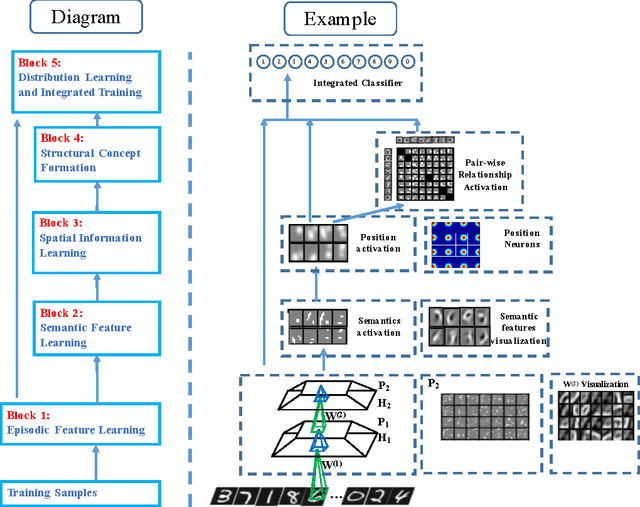
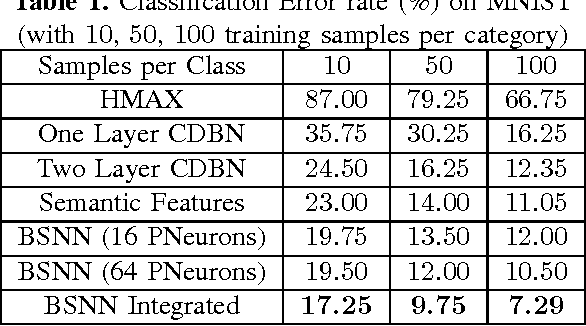
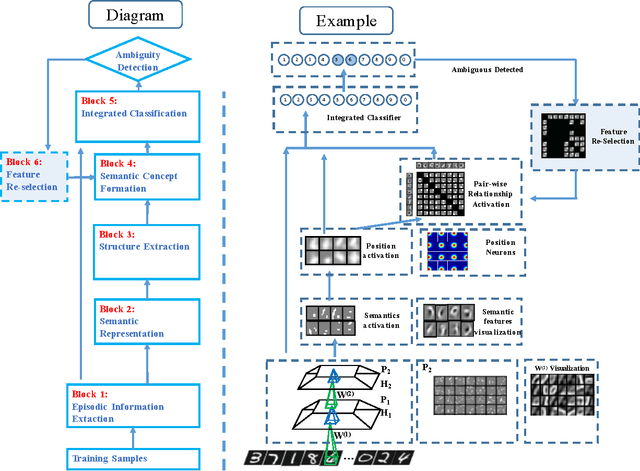
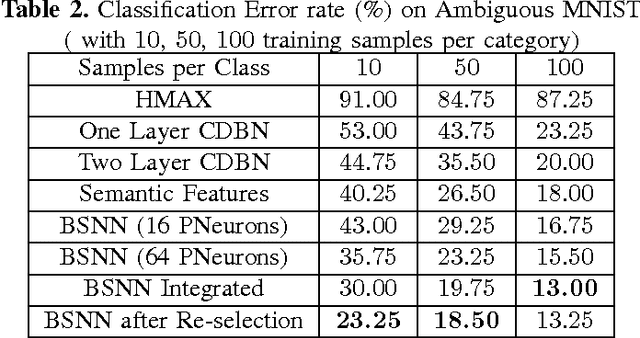
Abstract:Integration between biology and information science benefits both fields. Many related models have been proposed, such as computational visual cognition models, computational motor control models, integrations of both and so on. In general, the robustness and precision of recognition is one of the key problems for object recognition models. In this paper, inspired by features of human recognition process and their biological mechanisms, a new integrated and dynamic framework is proposed to mimic the semantic extraction, concept formation and feature re-selection in human visual processing. The main contributions of the proposed model are as follows: (1) Semantic feature extraction: Local semantic features are learnt from episodic features that are extracted from raw images through a deep neural network; (2) Integrated concept formation: Concepts are formed with local semantic information and structural information learnt through network. (3) Feature re-selection: When ambiguity is detected during recognition process, distinctive features according to the difference between ambiguous candidates are re-selected for recognition. Experimental results on hand-written digits and facial shape dataset show that, compared with other methods, the new proposed model exhibits higher robustness and precision for visual recognition, especially in the condition when input samples are smantic ambiguous. Meanwhile, the introduced biological mechanisms further strengthen the interaction between neuroscience and information science.
Biologically inspired model simulating visual pathways and cerebellum function in human - Achieving visuomotor coordination and high precision movement with learning ability
Mar 08, 2016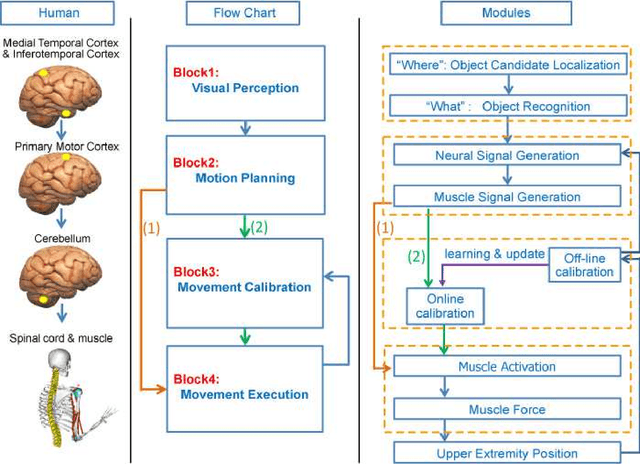
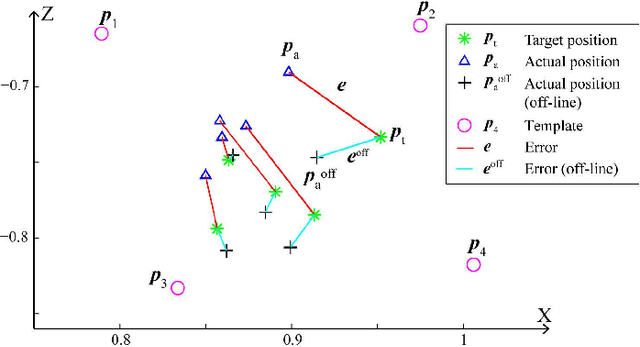
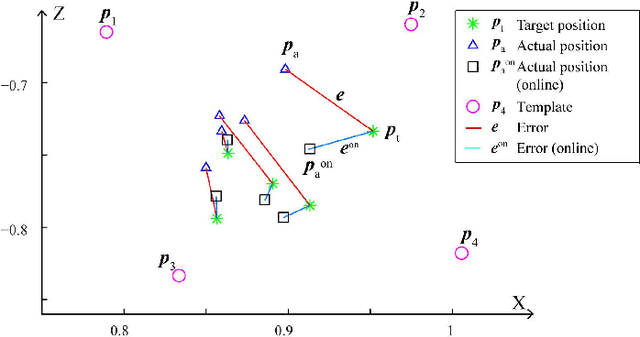
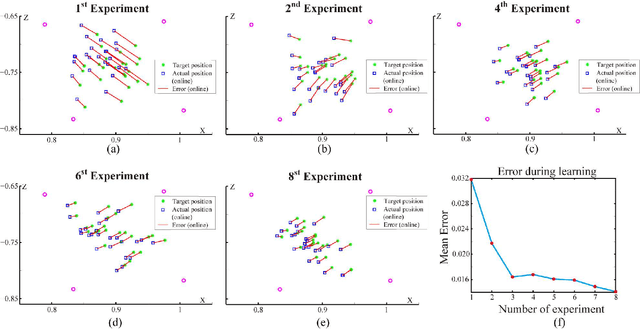
Abstract:In recent years, the interdisciplinary research between information science and neuroscience has been a hotspot. In this paper, based on recent biological findings, we proposed a new model to mimic visual information processing, motor planning and control in central and peripheral nervous systems of human. Main steps of the model are as follows: 1) Simulating "where" pathway in human: the Selective Search method is applied to simulate the function of human dorsal visual pathway to localize object candidates; 2) Simulating "what" pathway in human: a Convolutional Deep Belief Network is applied to simulate the hierarchical structure and function of human ventral visual pathway for object recognition; 3) Simulating motor planning process in human: habitual motion planning process in human is simulated, and motor commands are generated from the combination of control signals from past experiences; 4) Simulating precise movement control in human: calibrated control signals, which mimic the adjustment for movement from cerebellum in human, are generated and updated from calibration of movement errors in past experiences, and sent to the movement model to achieve high precision. The proposed framework mimics structures and functions of human recognition, visuomotor coordination and precise motor control. Experiments on object localization, recognition and movement control demonstrate that the new proposed model can not only accomplish visuomotor coordination tasks, but also achieve high precision movement with learning ability. Meanwhile, the results also prove the validity of the introduced mechanisms. Furthermore, the proposed model could be generalized and applied to other systems, such as mechanical and electrical systems in robotics, to achieve fast response, high precision movement with learning ability.
 Add to Chrome
Add to Chrome Add to Firefox
Add to Firefox Add to Edge
Add to Edge